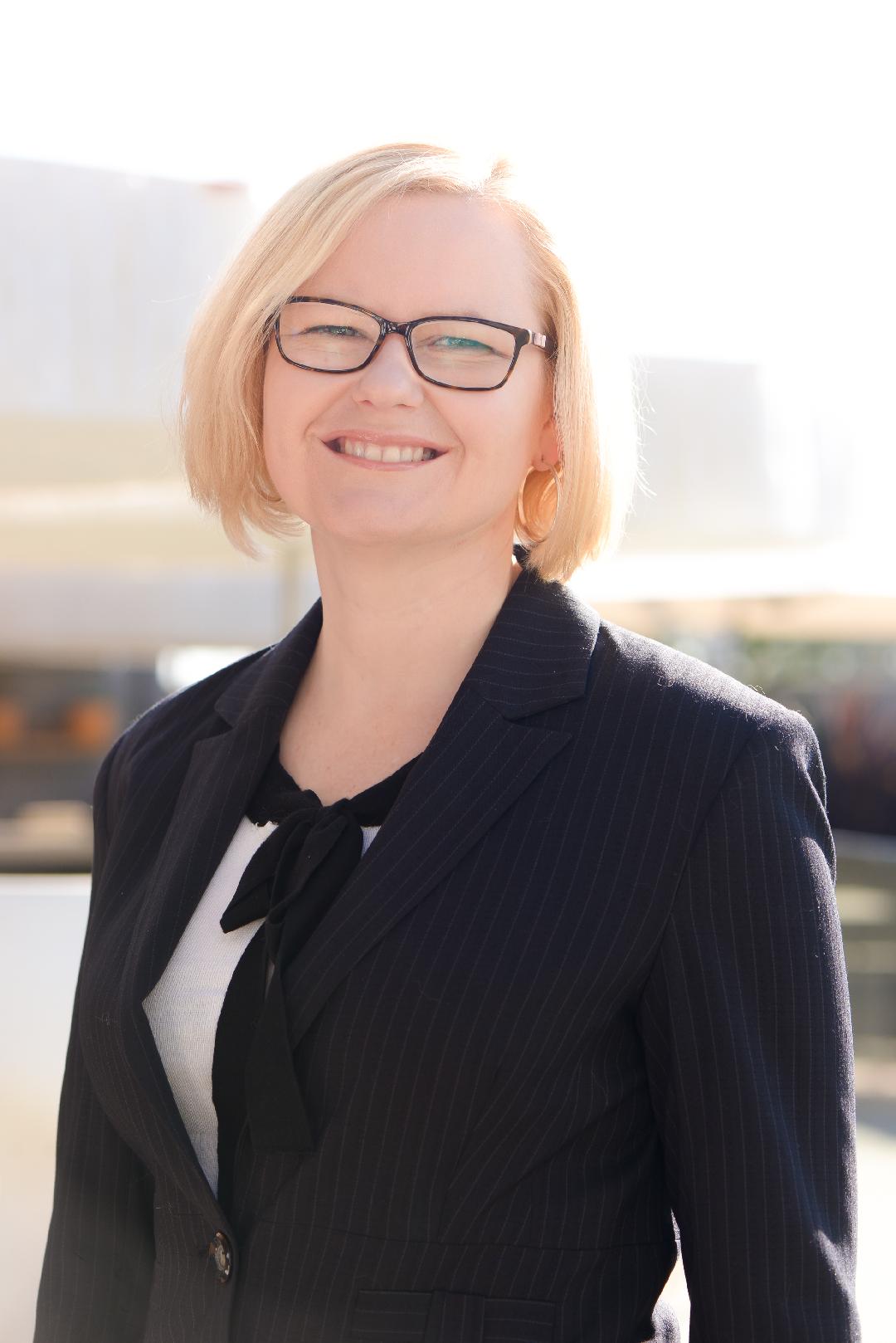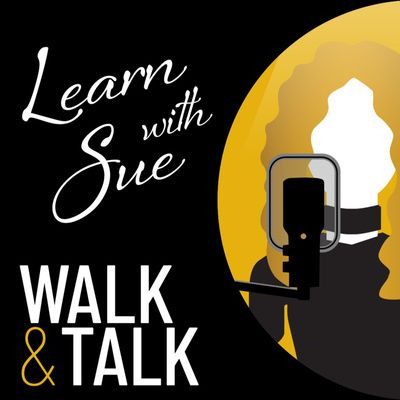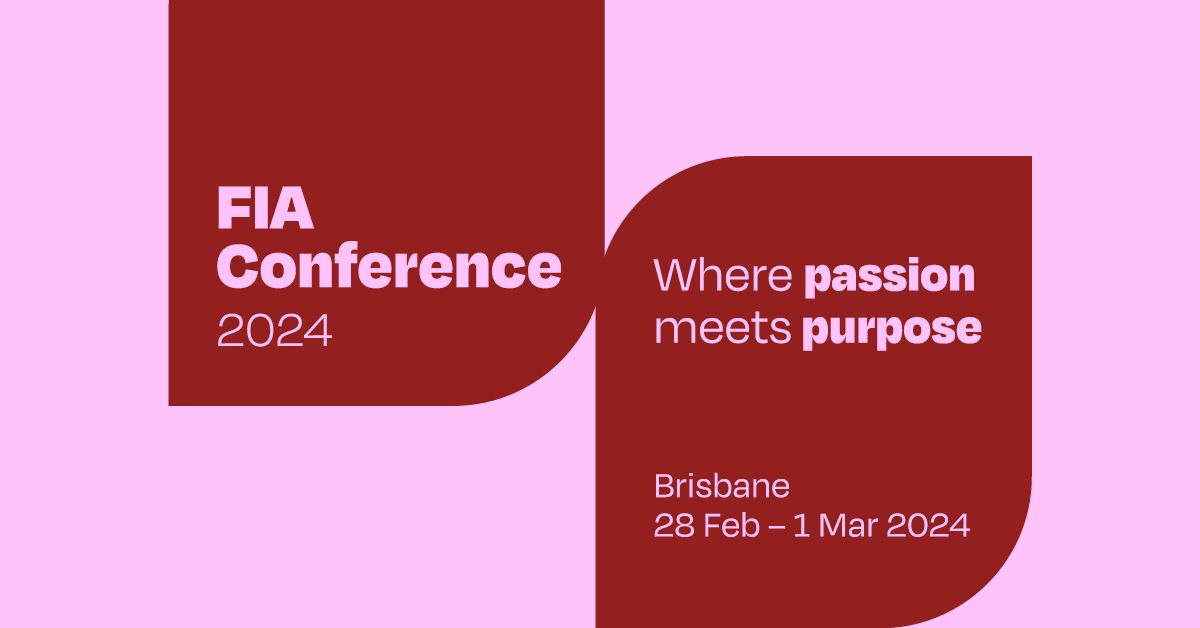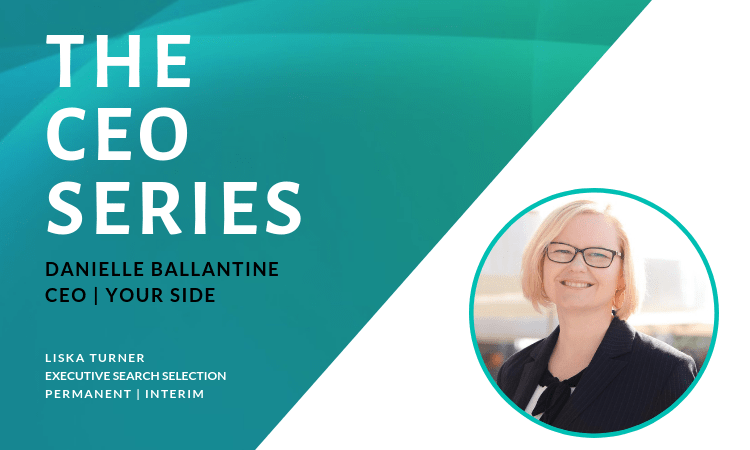The CEO Series: Q&A with Danielle Ballantine, CEO at Your Side
The CEO Series: Leadership Observations From The Front Line
Interviews with CEOs from the For-Purpose sector with Liska Turner.
For-Purpose leaders are as diverse as the organisations that they lead. Every couple of months I sit down with a CEO where they share their experiences and thoughts on leading a for-purpose organisation. This month I had the pleasure of talking to Danielle Ballantine, CEO at Your Side.

Danielle Ballantine, CEO at Your Side
Danielle Ballantine is the CEO of Your Side Australia, a leading provider of support services throughout Sydney. Our unique model of care reduces the burden of coordinating care, saving families 200 hours a year. We give people 5.2 work weeks back in their lives.
Your Side Australia embarked on a significant transformation journey 4 years ago. We recognised that in order to remain true to our purpose, while respecting our history, we still needed to change. In a short time, we have grown our services from 6 to 30, and a 400% increase in hours of care delivered, resulting in a 340% increase in revenue.As the universal provider of care, I get the fortunate opportunity to lead an amazing team who are devoted to great service for carers, people with disability and older people.
CEOs lead from the front. What are the most important decisions you make as a leader of your organisation?
CEO’s lead from the front, but also from behind and the side. You need to be situational and at times, this means walking alongside your people; encouraging them to lead while you provide support.
It’s also in the day to day decisions that you make. The priority you allocate to different tasks. The role can be demanding, and at times, it can feel as though all of your stakeholders need something from you. Being clear on your purpose and priorities first and foremost are critical. But if I had to pick the big decisions, it is around client service; their safety, the quality of their service and right now, growing our unique business model.
What is your best habit?
Sleeping in on a Sunday morning. I’ve perfected rest. Seriously though, it’s “discipline and consistency”. A mentor once told me that the role of a leader was to be consistent, and this really resonated with me. Disciplined and consistent behaviours are important in any business and with any team. Your people look for a level of consistent behaviour and a level of predictability. This gives them surety and safety. It also reaffirms to people that the direction is clear, for you and for them.
I also value spontaneity and the ability to pivot, when it’s right. Discipline isn’t about rigidity, rather discipline within a framework assures people why pivoting in the business is required.
Culture is fundamental to organisational success. How do you help new employees understand the culture of your organisation?
For me, culture is the way you do things around here. It sets behaviour, attitude and relationships. I often talk about “defending our culture”. Your Side is a great place to work, because of the people.
To bring new people into our culture, I have a one-to-one meeting with all new employees in their first week here. It’s a casual opportunity to get to know them and them me. We talk about professional passions and what brings us to this sector. With this mutual understanding, we get to know each other’s drivers. They can make informed decisions around being aligned with our business objectives.
We do a lot of laughing. I do the loudest and the most. It’s okay to relax and be yourself here at Your Side. It can be a stressful job and laughter is our outlet.
We also eat a lot. Everything happens around food and again I love that! Sharing bread together. We celebrate every cultural day that exists. We have a very diverse workforce here, so we try to celebrate religious and cultural holidays that our people celebrate at home. I find that people are more open and relaxed when eating together.
I also hold myself accountable to the team. I present our performance, each month to the team. This is my way of saying I am as accountable to them as they are to me. I talk openly with the executive team about what is required of my role and how it impacts on their role. I personally take accountability for the performance of the organisation as a collective. The whole is greater than its parts.
No business operates in isolation. When you are considering partnering with another person or business, what factors are deal-breakers for you?
Our business success relies on our partners and our relationship with them. If values are incongruent or direction misaligned it is not a good partnership. I am unforgiving about poor quality of work. Our client’s safety and quality of service provided to them is integral and paramount to our business. They have to deliver as if they are us.
As an organisation we are collaborative so if a partner becomes demanding, bossy and win at all costs then that does not work for us. We come to every relationship with the genuine intent to work together. I am transparent and upfront with our partners about our organisation, our performance and our direction, and I expect this honesty to be reciprocated.
Of course, there is also the need to pass standard probity checks and due diligence.
Succession planning is key to building a sustainable organisation. How do you choose who to promote?
I have a defined succession planning matrix built into each key role’s position description and score an internal potential against it. It helps me determine if a promotion is a possibility. Sometimes I need to go external, thinking ahead but then there are those roles where I can see the gaps and opportunities for development.
I come from a defence force family. The defence force builds capacity and strength. Each person trains to be able to do the role 2 ranks above their own so that if your commanding officer is lost, there is always someone trained, who can step in. I like building that depth of strength even if there is no evident promotion or opportunity. If there are no opportunities in the short term, people may leave and then boomerang back with their new experience. I did it in two different organisations and it was really valuable for all parties.
Where do you draw your support and inspiration from as a leader?
Both my grandmothers were very strong and resilient women. I respect this resilience and wisdom. They both supported their families through difficult times.
In a professional context, I have been incredibly fortunate to work with leaders who are strong ideologically and lead with purpose. In particular, Therese Rein at Ingeus. Therese set a really great example of feminine leadership. She balanced the soft skills of empathy, communication, understanding the customer and their experience with the hard skills of finance, systems and processes. She successfully managed the 2 tensions and built a business where she was incredibly respected.
All her communication was lead by purpose. This included her written communication as well as her actions. Relationships were important to her. She remembered your name. She was a very good role model of how to be a feminine leader but did it without compromising systems, structure and accountability.
I think it is important for girls and women to see positive feminine role models in today's workforce. As for support, it sounds a bit cheesy but it’s my husband. He is my biggest cheerleader. He tackles my imposter syndrome and then lists my strengths one by one. He listens to me and helps workshop my ideas. He never says no to anything. He stands alongside me and is always encouraging.
And then there is the board. I took them on the journey of change and the Chair also helped me see beyond what I could see. Without the support of the Chair, the CEO could be crippled especially on a transformation journey, and the leap of faith we had to take. My Chair is great at checking in and giving me honest and direct feedback.
The role of the CEO is quite unique. What advice would you give someone going into a CEO leadership role for the first time?
Four things.Firstly, get a mentor who will walk beside you as you navigate your new board, strategic direction and organisational nuances.
Secondly, respect the wisdom of your people even if you are looking to change. Your people and customers know best. Understand them before you enact any change. Allow people to feel respected and heard even as you move along the change and you will learn a lot. This can be a tricky balance especially if the board is pushing for change.
Thirdly, set the tone quickly. Let them know what you do and don’t stand for. They are just as nervous as you. They are looking for an indication on how to behave. Find a human connection.
Finally, set a 100-day plan. Publish it to the board and your people. Set 3 or 4 goals and then double down on it. Build trust by doing what you say you are going to do.
What leadership decision are you most proud of?
I can’t come up with just one single decision to be proud of. It’s rather that when faced with a leadership challenge I am most proud of being able to make the hard or unpopular decision. It’s not always about the decision, but the process of reaching a decision that requires grit, strength and resilience. I’m probably proud of having the strength and resilience to get to the decision.
You can connect with Danielle and Your Side at:
Facebook- https://www.facebook.com/yoursideaus/
Danielle's LinkedIn - https://www.linkedin.com/in/danielleballantine/
LinkedIn - https://www.linkedin.com/company/yoursideaustralia/
Recent Articles






All content copyrighted Beaumont People © All rights reserved.




